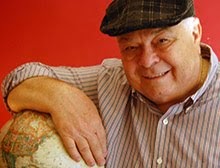 |
| The TGVs of France are among the fastest most efficient train in Europe (wikipedia) |
EUROPE — Rail travel through Europe
is one of the fastest, most efficient ways to see the continent. Rail passes
also include hidden practical bonuses many travelers never consider when
planning a trip such as no high cost fuel expenses, travel city center to city
center, eliminating parking costs, no more reading maps, ability to stretch
your legs, on-board restrooms, food services and even an opportunity to work,
take a nap or just relax.
Many American
travelers frequently overlook the benefits of rail travel in Europe
because we have become so dependent upon cars, or so unfamiliar with high
quality rail service, that we fail to consider an alternative to the
automobile.
 |
| Italy's high speed Italo (wikipedia) |
Rail Europe is a
traveler's one stop shop for all things related to traveling by train, but with
a little advanced understanding of how rail passes work will put you way ahead
in the game of trying to manage the seemingly overwhelming number of tickets
that are available.
In the simplest of
terms, there are only two basic types of pass. The first is a consecutive day
ticket and the second is called a "flexipass."
 |
| Trains take you city center to city center faster than planes in many cases (wikipedia) |
The consecutive pass
originated back in the days of "if-it's-Tuesday-it-must-be-Belgium"
travel to Europe . At that time, a trip to Europe was considered a one-in-a-lifetime opportunity so
travelers would go for extended periods and wear themselves out trying to see
everything in a single itinerary.
A consecutive day
rail pass was good for a given number of days such as 8, 12, two weeks or even
as much as one or two months. Once validated however, if they did not use the
pass every day, travelers felt as if they were losing money because they were
not getting the full value of their rail ticket.
Thus evolved the
"flexipass" which allows travelers to choose how many days they would
like to ride the trains and to designate how long they plan to be in Europe . For example, a couple might opt to use four days
of train travel within a two week period, thereby allowing them to ride the
rails on any four days they chose until the validation period runs out.
 |
| Trains operate in any kind of weather (wikipedia) |
Those two basic
concepts have led to an infinite number of off-shoots and that is where passes can
begin to get confusing.
As time went on, and
travelers became more savvy, and the demand for a limited number of countries
on a pass arose. Many visitors opted for a single country pass since they were
only planning to stay in Germany ,
France or Italy
In an effort to make
rail passes more flexible and adaptable for train riders, Rail Europe developed
several plans that give a traveler virtually unlimited options while, at the
same time, reducing fares.
National passes that
are good for only a singe country have become very popular and, since all the
travel is in a single country, the price is lower.
 |
| Steam train crosses Glenfinnian Viaduct in Scotland (wikipedia) |
Later, Rail Europe
developed combination passes which include two, three, four or five countries
depending upon the length of time a traveler plans to be in Europe .
The benefits of these
passes are the bonuses which are often one of the most overlooked features of
traveling by train. With a Swiss
Travel Pass
 |
| A British Sprinter train races through the countryside (wikipedia) |
Better yet, for
visitors to Switzerland
Certain countries are
grouped together as a single destination such the Netherlands ,
Belgium and Luxembourg
To simplify things
even more, rail passes have evolved so that
visitors can select several countries that border each other. Riders can
choose which countries they desire based upon their individual travel program.
A Saverpass is a
product which can be used by 2 to 5 people traveling together for a nice
discount.
There are also
Youthpasses providing special rates for travelers under 26, while children and
youths who are under 16 and traveling with an adult or guardian often can ride
for free.
 |
| A vista along the Cambrian Coast in Wales (wikipedia) |
Keep in mind that
railway stations can be like your personal tourist office away from home where
you can get information, schedules, food, restrooms, lockers, gifts, medicine
and, in some places, book a hotel.
Rail pass prices go
from calendar year to calendar year so there is no need to worry about changes
in any given year.
 |
| Germany's sleek and comfortable ICE (wikipedia) |
Traveling by train
through Europe is easy, fast, convenient,
efficient and relaxing. A little reading on how rail passes can be your biggest
ally will make you a true believer.
All it takes is a
little basic training.













































